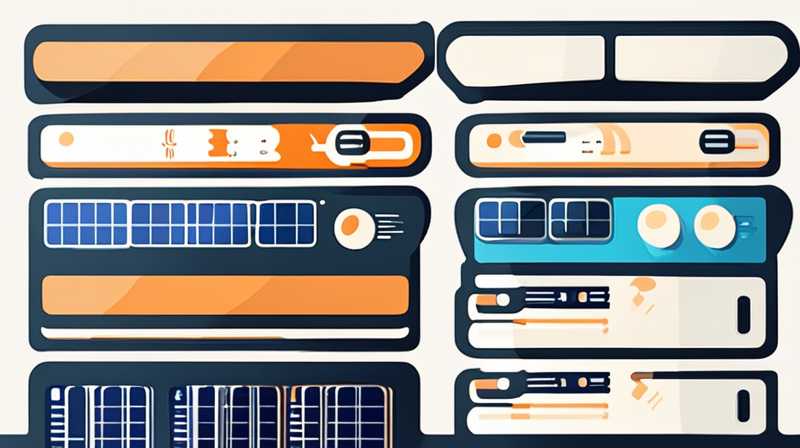
Correcting the alignment and level of a solar rack requires a systematic approach to ensure optimal performance. 1. Assess structural integrity, 2. Realign the framework, 3. Securely fasten components, 4. Periodic maintenance checks. Each of these aspects plays a crucial role in preventing complications during solar panel operation.
1. ASSESS STRUCTURAL INTEGRITY
Before making adjustments to the solar rack, a thorough examination of its structural integrity is paramount. A solar rack must be robust enough to withstand environmental factors such as wind and precipitation, as well as the weight of the panels themselves. Any visible signs of wear, corrosion, or damage necessitate immediate attention. Eroded materials can compromise the stability and safety of the array.
Inspection should encompass not only the main support poles but also the connecting brackets and mounts. A meticulous review may also include verifying that all grounding components are intact and functioning. This level of scrutiny prevents future structural failures. Adequately assessing structural integrity serves as a resilient foundation for subsequent alignment activities and reinforces the reliability of the solar panel system.
2. REALIGN THE FRAMEWORK
After assessing the solar rack’s integrity, realignment emerges as a critical task. The alignment process will guarantee that the solar panels are at the optimal angle for sun exposure throughout the day. Using precise measuring tools such as a level, the rack must be adjusted to ensure that it is both horizontally and vertically aligned.
When realigning, one should consider the geographic location in relation to the sun’s path. This geographical factor affects how the panels should be positioned to capture maximum solar energy. A solar array ideally tilts toward the equator, so adjustments must also cater to seasonal variations. This comprehensive alignment ensures that energy production is at its peak and minimizes the chance of any shading that could diminish efficiency.
3. SECURELY FASTEN COMPONENTS
Once alignment adjustments are completed, securing all components is essential for long-term stability. Components such as screws, bolts, and brackets should be tightened to specification. This enhances not just operational integrity but also safety, as loose parts can eventually lead to structural failure.
Utilizing appropriate tools designed for outdoor applications will prevent rust or deterioration over time. It is beneficial to consider periodic checks to ensure that components remain securely fastened and that wear-and-tear is addressed promptly. By emphasizing this degree of vigilance, operators can dramatically reduce the risk of future issues, thereby ensuring a sustainable solar energy system.
4. PERIODIC MAINTENANCE CHECKS
Adopting a schedule for routine maintenance checks should not be overlooked in the process of correcting solar rack issues. Regular inspections allow operators to detect problems that may arise over time, including potential structural weaknesses or alignment deviations. Regular maintenance is instrumental in keeping the solar rack in peak condition and verifying that it performs efficiently.
Cleaning is another crucial aspect of maintenance. Dust, debris, or snow accumulation can impede performance. A clean rack allows for optimal energy capture, so taking proactive measures will ensure continued efficiency. The careful implementation of a maintenance regimen manifests in enhanced longevity and effectiveness of the solar panel system.
FREQUENTLY ASKED QUESTIONS
1. HOW IMPORTANT IS ALIGNMENT FOR SOLAR PANEL PERFORMANCE?
Proper alignment of solar panels is fundamentally significant for optimizing energy capture. When panels are misaligned, they may fail to receive the maximum amount of solar radiation throughout the day. Any misalignment can lead to substantial energy loss, often in the range of 20% or more. Additionally, improper alignment may result in unnecessary strain on the system, leading to premature wear and potential structural failures. To maintain effective energy production, it is recommended to regularly check the alignment of solar panels and make necessary adjustments in response to changes in seasons or structural shifts.
2. WHAT TOOLS ARE REQUIRED FOR CORRECTING A SOLAR RACK?
When it comes to correcting a solar rack, specific tools are essential for performing duties effectively. Essential tools may include a spirit level for checking alignment, a torque wrench for appropriately tightening screws and bolts, a socket set, and a measuring tape for precise measurements. Safety equipment is crucial as well, such as gloves and goggles, to ensure that the technician can work safely and efficiently. Additionally, depending on the particular rack system, specialized tools could be required, so consulting the manufacturer’s specifications is wise. Having the right tools at hand significantly streamlines the repair and maintenance process, ensuring optimal performance of the solar array.
3. WHAT ARE SOME TIPS FOR MAINTAINING SOLAR RACK IN THE LONG TERM?
Maintaining a solar rack involves several proactive strategies for prolonging its lifespan and performance efficiency. Beginning with routine inspections, it’s advisable to check for signs of rust or structural damage regularly. Cleaning the panels and the rack of debris, snow, or dirt is important, as shading can lead to reduced performance. Additionally, ensuring that all clamps and bolts remain secure and tightening them as necessary enhances alignment and integrity. Consider documenting these maintenance activities, as they facilitate tracking any changes or deterioration over time. By fostering a disciplined approach to care, operators can significantly enhance the long-term effectiveness of their solar energy systems.
Correcting and maintaining a solar rack is an indispensable aspect of ensuring optimal energy efficiency. Every operation, from evaluating the structure to realigning and securing components, serves a significant purpose in the overall functionality of the solar panel system. By closely monitoring performance and adhering to a well-defined maintenance schedule, one can avert substantial problems and prolong the lifespan of the system. Awareness of potential issues should motivate regular checks, as this proactive behavior leads to higher energy yields, ultimately benefiting both the environment and economic performance. As solar technology continues to evolve, staying informed about best practices becomes ever more essential. Pioneering advancements in solar energy further elevate the importance of regular evaluations coupled with timely rectifications. Implementing these practices ensures that the solar energy system operates at peak performance reliably over time.
Original article by NenPower, If reposted, please credit the source: https://nenpower.com/blog/how-to-correct-the-solar-rack/


